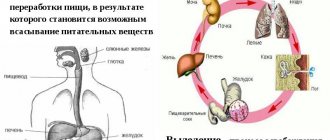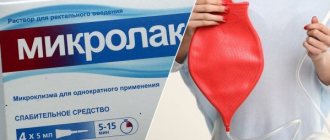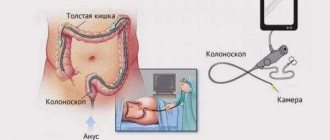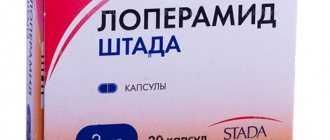The big picture
A caesarean section is a surgical procedure that involves making a horizontal incision in the peritoneum through which the newborn is removed. Caesarean section can be performed planned or emergency. In the case of a planned cesarean section, the indications for the operation are:
- Small pelvis, preventing natural delivery;
- The presence of uterine formations or growths;
- The presence of certain pathologies such as cardiovascular diseases, retinal detachment, etc.;
- Incorrect fetal position on the eve of delivery;
- The presence of allergic or viral pathologies localized on the genital mucosa, upon contact with which during natural delivery infection is likely;
- Incorrect placental location, blocking the birth of the baby through natural pathways;
- Possible uterine rupture caused by cicatricial dehiscence after previous births;
- Possible complications during pregnancy that threaten the life of the fetus or mother;
- Multiple pregnancy, etc.
These are planned indications, but sometimes during childbirth there is an urgent need for surgical intervention, for example, when there is a real threat of irreversible, negative consequences. Also, emergency cesarean section is carried out in case of sudden placental abruption, threat of rupture of the uterine wall, life-threatening hypoxia, weak labor or its sudden cessation.
Is there such a thing as childbirth without pain?
Every woman dreams of giving birth without pain. When going to the maternity hospital, listening to friends' stories about how difficult and painful the contractions are, many expectant mothers dream of a caesarean section.
It is in vain to think that there will be no pain at all. And you don’t need to push, just lie on the operating table for half an hour. But it's not that simple.
You can't outsmart nature. Bypassing contractions and pushing, a woman will face pain after surgery.
First, you should figure out why your stomach hurts after a caesarean section. After all, pain can be different and its causes are also different.
It has long been no secret that if a woman goes into surgery or childbirth with a positive emotional attitude, then the pain will be easier to bear.
Doctors' advice
What a woman needs to know in order to avoid possible complications and pain after a caesarean section, says my colleague, first category obstetrician-gynecologist, Araksia Khachaturyan: “Despite the fact that with the birth of a baby, the mother’s number of responsibilities and worries increases significantly, an equally important task is do not forget about your own health and well-being.
The first and most important point is hygiene. The seam should be treated every day until it is completely healed. It is highly advisable to use a postpartum bandage for some time, which will support the cut muscles and significantly reduce soreness. It is also necessary to follow a diet, excluding foods that can increase the formation of gases in the intestines.
In particular, these are: soybeans, legumes, sweets, baked goods, carbonated drinks. The diet must include boiled beets, baked apples, and prunes. You need to drink clean water every day - at least 1.5 liters. You also need to properly dose physical activity, but also not overdo it while lying in bed.
Sources of pain
You need to carefully monitor your health
As a rule, in the first postoperative days the patient feels pronounced pain, which is not surprising, because cesarean is still an operation in which an incision is made on the woman’s peritoneum and uterine wall. Therefore, the appearance of pain after a cesarean section is a completely natural phenomenon, because a surgical operation never goes away without leaving a trace and requires a certain rehabilitation period.
A suture is placed on the uterus and abdominal wall. Usually, during a planned operation, the suture is made horizontally, and during an emergency intervention, it is made vertically. In the latter case, getting to the baby and removing him is much faster, which is why this is the incision that is performed during emergency surgical delivery.
Suture pain
When the anesthesia wears off after delivery, the woman inevitably experiences intense painful symptoms in the suture that appears at the incision site. Dense suture structures put pressure on the tissues gathered together, which is why pain occurs - a completely natural postoperative consequence.
After about a week, the unpleasant painful symptoms in the suture tissues will begin to decrease, but the pain will still clearly manifest itself when the abdomen tenses during laughter, coughing, sudden movements, etc. Painful sensations can radiate to the side, left or right side. Such signs indicate that it is too early for mommy to return to her usual household chores, so exercise is still prohibited.
I have a stomachache
Painful discomfort in a woman's abdomen is often confused with contractile uterine activity, during which the uterus returns to its previous size. In addition, in the postoperative period, painful discomfort in the uterus is often caused by the presence of a fresh scar that appeared during surgical delivery.
- The presence of a wound and contractile uterine activity cause very unpleasant painful sensations that any woman can easily endure.
- The most pronounced pain, as noted by the mothers themselves, worries patients in the first 3-5 days after surgery. The uterus is simply contracting intensely.
- Pain in the uterus may occur when breastfeeding
Contractile activity is especially enhanced during feeding, which is associated with stimulation of the nipples, which promotes uterine contractions.
- To speed up uterine recovery and return to original parameters, patients are advised to take oxytocin-containing drugs like Dinoprost or Demoxytocin, Hyfotocin or Ergotal. These drugs are taken in a short course until the uterus is completely restored to its pre-conception state.
Such medical assistance promotes rapid restoration of the uterine body and helps facilitate the process of independent restoration of a woman’s main reproductive organ.
Back pain
The gestation period is a whole test for the mother's body. After all, the load on the vertebral structures increases significantly, which is fraught with various spasms, pain and nerve pinching. It is as a result of pinched nerves that characteristic pain in the back most often occurs.
Quite often, mothers complain of the appearance of acute painful sensations in the lumbar region after a cesarean section. Most often, such pains bother mothers who gave birth naturally, but they also occur in cesarean patients, especially in those whose labor began traditionally, but then difficulties arose and the mother had to be cesareaned.
One of the important factors is the state of the vertebral structures before conception. If the patient had any curvature or poor posture, then she is more likely to experience lumbar pain. Pain may also occur in the lower extremities. In this case, experts say that postpartum swelling has not yet passed or the processes of varicose veins are beginning. Therefore, women are recommended to wear special compression stockings for caesarean sections.
Intestinal discomfort
It’s worth taking a break from certain foods for a while.
Also, painful symptoms after cesarean section can be caused by intestinal problems, because surgical measures cannot but affect the activity of the gastrointestinal tract. Especially often, women after childbirth by cesarean experience excessive gas formation, which can cause quite severe abdominal pain. To relieve such pain, it is necessary to restore intestinal motility, which will help significantly alleviate the patient’s condition.
But do not self-medicate, since only a specialist can select the appropriate medications. It is also recommended to create a suitable diet, refusing to eat cabbage and legumes, kefir and milk, grapes and cheese, biscuits, buns, soda, etc.
Intestinal problems sometimes interfere with bowel movements, and postpartum constipation aggravates the situation. In such a case, there is no way to do without the help of a specialist. Usually, in order to reduce discomfort and painful symptoms, it is enough to normalize the functioning of the gastrointestinal tract, for which patients are prescribed rectal suppositories that soften stool, suppress the formation of gases and stimulate intestinal peristalsis.
When the suture connecting the edges of the surgical wound heals, a dense scar formation is formed, which in itself brings the patient a lot of discomfort, manifested by painful sensations and tingling.
- For health, such sensations cannot in any way be dangerous, but still they are associated with certain inconveniences for mommy.
- In the first couple of weeks, the patient needs to carefully monitor the condition of the suture tissue and listen sensitively to the sensations inside the seam.
- Make sure that the wound is always clean; even a small drop of purulent mass is unacceptable, because it may indicate contamination of the suture and the penetration of infection into it.
- If the patient suddenly develops a fever, the temperature rises and her health begins to deteriorate sharply, it is necessary to immediately inform the treating specialist.
What exactly hurts?
First of all, the stitches hurt. After all, during the caesarean section the stomach and uterus were cut. After the operation, pain relief is prescribed. By day 3, most women refuse it themselves, as the pain gradually subsides.
On the 5th-7th day the stitches will be removed, after which it will become much easier. By the end of the first week, the acute pain goes away. But for about a month the sensitivity disorder, slight tingling, and itching persist. In 20% of women, pain in the suture area persists for up to 3 months or more.
Important! Here you should be very careful, if there is swelling, redness of the skin around the scar or discharge from it, and the temperature has risen, in this situation you need to consult a doctor.
It is rare, but chronic pain in the area of the postoperative scar occurs. This occurs due to nerve damage and the formation of neuromas. This complication often requires repeat surgery and scar excision.
Secondly, if you had general anesthesia, then after intubation of the trachea, your throat will feel sore, and mucus will accumulate in your lungs. I have a cough. Coughing causes discomfort in the wound area.
To make it easier to cough, hold your stomach with your hands, inhale deeply and exhale with a loud sound, while drawing in your stomach. Repeat several times.
Thirdly, a caesarean section is also a birth. After the operation, the uterus is at the level of the navel and every day its volume and size decrease. Uterine contractions cause pain.
Moreover, after repeated births, the pain is worse. The pain resembles weak contractions in nature. When feeding a child, this pain intensifies because... Oxytocin is released, a hormone that promotes contraction of the uterus and releases it from postpartum discharge (lochia). As soon as the uterus contracts, the pain will go away. This will happen by the end of the first week. It's nice that your tummy will also become noticeably smaller.
If you have a fever, feel weakness, chills and intense pain in the lower abdomen, discharge with an unpleasant odor - be sure to call a doctor. This can be such a formidable complication as endometritis.
These pains appear later at 3-4, or even 5-7 days. This is in contrast to muscle pain from uterine contractions, which are strongest immediately after surgery and decrease every day.
Fourthly, the stomach can also hurt due to bloating. During the operation, he was a little “bruised” and did not want to work on the first day. If a woman violates the recommended diet, she may well encounter this type of pain.
If you feel bloated due to gas build-up, sit on your bed and rock back and forth a little while breathing deeply. Then lie on your side, the gases will go away.
To prevent intestinal bloating, doctors recommend not eating anything for the first day after surgery. Injections are prescribed to help improve intestinal motility. By the second day, gases should begin to pass.
You can eat low-fat beef or chicken broth, a few spoons of porridge, drink tea and water. On the third day, you can add a boiled egg, kefir, cottage cheese, and steamed meat. By 3-4 days there should be stool. After this, you can eat everything that is not harmful to the child. you will breastfeed. Avoid fried, spicy, herbs and spices.
The meat must be boiled or stewed. Fruits and vegetables, but not red.
Important! Do not eat foods that are allergens: honey, chocolate, citrus fruits, red berries and fruits, nuts and foods that cause increased gas formation.
Scar formation
Scar formation after a cesarean section is a natural and important process. Symptoms such as dull pain in the suture area, slight tingling, and internal itching will indicate its formation.
It is also very important to constantly monitor the suture and scar so that an abscess does not form inside and rotting of the internal tissues under the suture does not begin. In addition, lymph and other types of contents should not be released from the suture.
And if a woman’s body temperature rises or her head begins to hurt, it is very important to immediately seek medical help. This will help to quickly diagnose the problem and begin to treat it, thereby protecting you from very serious complications.
How much does your stomach hurt after a caesarean section?
As after any surgical intervention, a woman after a CS will have to go through a period of rehabilitation. After all, in order to remove the child from the uterus, the surgeon cuts the skin on the abdomen and internal organs layer by layer, then applies sutures. Therefore, it is quite logical that after a cesarean section the stomach hurts and discomfort occurs.
In the first few days, while the young mother is in the intensive care unit, painful sensations are considered normal. At this time, they are treated with medications prescribed by the attending physician. In addition, the woman in labor can be given vitamin compounds to generally strengthen the body, and antibiotics to minimize the risk of inflammatory processes in the uterus. Sometimes it is necessary to infuse patients with blood plasma if there has been blood loss.
How long does your stomach hurt after a cesarean section?
1 monthfrom 2 months
After 3-4 days, the pain is significantly dulled, and after another week it should not be there at all. Otherwise, it is imperative to consult a doctor, especially when painful sensations are accompanied by high fever, strange discharge from the suture, or red secretion with an unpleasant odor from the vagina.
The reasons why abdominal pain occurs at first after a cesarean section may be different. Here everything depends on the age of the woman, and on how many births she had previously, how the pregnancy proceeded, and the process of delivery itself.
So the problem may be caused by:
- Features of postpartum suture healing. The anesthesia used during surgery does not leave the body immediately. Therefore, the first few hours after the baby is born, the young mother may not feel pain at all. But when the anesthesia wears off completely, the wound will bother you for quite a long time. The intensity of pain can vary depending on the pain threshold of an individual woman and the number of uterine surgeries she has undergone. If a CS was done for the first time, then the suture will take longer to heal and ache than for a second-bearing mother. Severe painful symptoms should normally disappear after three days, but tingling in the suture area can take up to two weeks to make itself felt.
- Malfunctions of the intestines. The accumulation of gases in the intestines is a common occurrence after a CS. This can cause severe discomfort and bothersome abdominal pain. The bottom line is that any operation causes disturbances in peristalsis. As a result, food moves slowly, bloating begins, causing sharp and sharp pain. The reason may also be the formation of postpartum adhesions that appear between the internal organs and intestinal loops.
- Involution of the uterus. It is known that after natural delivery the uterus begins to contract, and because of this, pain occurs in the lower abdomen, very similar to those that accompany menstruation. Despite the fact that with CS the process of giving birth to a baby is radically different, the body’s reaction is the same in both cases. That is, the uterus is also actively contracting and the sensations are similar. The primary influence on the process is the hormone oxytocin, which is intensively produced by the body during lactation. If the pain is unbearable and continues constantly, you should definitely inform your doctor about it to exclude possible complications.
- Physiological processes. Immediately after a CS, the suture may react with acute pain to the slightest movement, be it even inhalation and exhalation, sneezing or coughing. You need to try to endure these unpleasant sensations and, despite the discomfort, minimize the time spent in a lying position, since the lack of physical activity only further delays the recovery process.
- Complications. Among the most possible is endometritis or, in other words, an inflammatory process in the uterine cavity. We also cannot rule out seam divergence, which will certainly cause severe pain.
I have listed just a few factors that most often cause pain. There can be many more reasons and they are all individual. It is impossible to make a diagnosis remotely, relying only on the woman’s feelings and general symptoms. Therefore, a detailed examination and testing are necessary measures.
In the first three days after surgical delivery, the patient remains in the intensive care unit. These days, the stomach may not hurt so much, since the anesthesia is still in effect, and after it stops, the patient is given additional pain relief. Even if you cut your finger, it will hurt. What can we say about a full-fledged open cavity operation, during which several layers of flesh are dissected.
Along with painkillers, patients are given vitamins, and if there was significant blood loss during the operation, plasma is also infused. After 3-5 days, pain symptoms noticeably decrease, and then become dull and gradually disappear. In general, after a week or a week and a half, there should be no signs of acute pain in the abdomen, lower back or back.
A little about the operation
Operative childbirth is a full-fledged abdominal operation with incision of the abdomen and uterus and removal of the baby, after which all incisions are sutured. Therefore, after such a birth, patients experience much more pronounced discomfort than after a traditional natural birth. Recovery is especially difficult for mothers whose birth took place under general anesthesia.
But patients do not always go under the scalpel of their own free will. Quite often, circumstances such as an excessively narrow pelvis, complete placental presentation, rupture of the uterine wall or severe gestosis, dangerous vaginal bleeding and other conditions dangerous to the life of the fetus or the woman in labor are forced to agree to the operation.
During the operation, the surgeon opens the abdominal wall and uterus layer by layer. In this case, local anesthesia of the spinal or epidural type or traditional general anesthesia is used. After a normal birth, women in labor begin to get up within 3-4 hours, but after a caesarean section, such a feat can only be accomplished with the help of a nurse and only a day after the operation.
To reduce the pain caused by the incisions on the abdomen, mothers are given pain-relieving injections for several days, after a week the stitches are removed, and after another 2-3 days they are discharged. One of the most common unpleasant consequences of a cesarean section is quite severe pain in the abdomen.
Long-term consequences of cesarean section
Unfortunately, many women also experience long-term consequences. Years pass, but the stomach still hurts after cesarean. After any surgery, adhesions form in the abdominal cavity.
Adhesions form between the uterus, ovaries, intestines, and bladder, which causes discomfort and leads to chronic pelvic pain. If the intestines are involved in the adhesions, this can lead to constipation and intestinal obstruction. If the uterus, ovaries and tubes suffer, this is fraught with infertility.
Rarely, but occurs after cesarean endometriosis. The mucous membrane of the uterus enters the abdominal cavity and causes inflammation and the formation of adhesions there. During menstruation, the pain intensifies. Endometriosis of a postoperative scar occurs when the uterine mucosa begins to grow in the anterior abdominal wall.
Development of the adhesive process
Caesarean section is a surgical operation and, accordingly, involves forced damage to internal tissues and some organs. Therefore, when the healing process begins after surgery and stitching of these tissues, it is often accompanied by the formation of adhesive (scar) tissue.
The intestines are most often affected by adhesions. Adhesions form between its loops.
Pain from adhesions does not begin immediately, but only after some time, when the main part of them has already gone through all the stages of formation. And these pains can periodically bother you for the rest of your life. And if the painful syndrome from adhesions is not very strong, then they get used to it and do not pay much attention. And when its intensity increases, the doctor prescribes an additional operation aimed specifically at removing these adhesions.
Pain due to complications
If a cesarean birth is long in the past, and the painful symptoms still do not go away, then the mother should exclude the possibility of developing postoperative complications. Why do you need to visit a specialist? Modern diagnostic capabilities will help to identify the true causes of the pathology and select appropriate therapy. It is especially dangerous if abdominal pain is accompanied by unpleasant-smelling purulent vaginal discharge.
Such discharge may indicate developed endometritis, which is intrauterine inflammation, which is accompanied by hyperthermia, insomnia, chills, purulent brown discharge and lack of appetite, chronic weakness, etc. Also, painful discomfort in the abdomen can develop against the background of suture complications such as inflammation or dehiscence of a postoperative suture .
Symptoms
Each disease will be characterized by certain manifestations of unpleasant sensations.
Osteochondrosis
It is characterized by nagging pain that intensifies in the evening. An acute attack can manifest itself due to a sharp paroxysmal “lumbago” in the back, more often when rising from a horizontal position. In the presence of a herniated disc, irradiation into the right or left thigh is typical. The pain is shooting in nature. Discomfort in the back appears when lifting heavy objects (even a baby), or when bending the body forward.
Osteochondrosis after cesarean section
Inflammatory process in the pelvis
Characterized by constant nagging pain in the lower back and sacrum, similar to unpleasant sensations during menstruation. In addition, the body temperature may rise, and vaginal discharge may acquire an unpleasant odor.
Exacerbation of chronic diseases of the urinary system
In most cases this is pyelonephritis. In this case, back pain is localized above the lower back and is of a pulling nature. Symptoms of general intoxication appear: weakness, sweating, increased body temperature. If kidney stones are present, attacks of acute unbearable pain may occur.
We recommend reading the article about leg swelling after cesarean section. From it you will learn about the causes of edema, drugs to eliminate it, and the effectiveness of folk methods for edema after childbirth.
How to help yourself?
In order for you to start feeling good as soon as possible, after 3-4 hours you need to start turning over in bed, bending your legs at the knee and ankle joints, bending and raising your arms, squeezing and unclenching your hands, and drawing in your stomach as you exhale.
After 10-12 hours try to get up. Wear a bandage. Do breathing exercises.
Interesting! Kegel exercises (tension and relaxation of the perineal muscles) are very good for improving blood circulation in the pelvic organs and speeding up their recovery.











